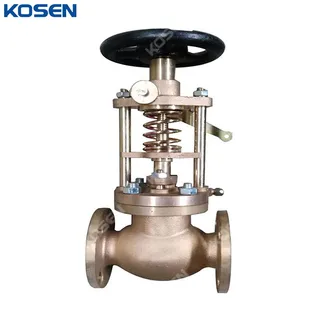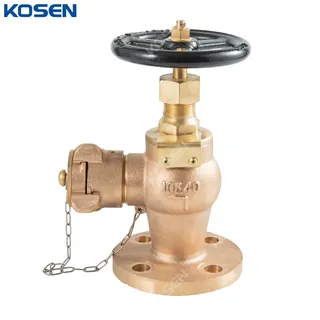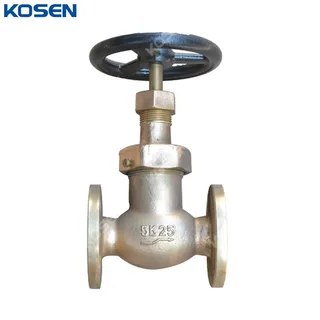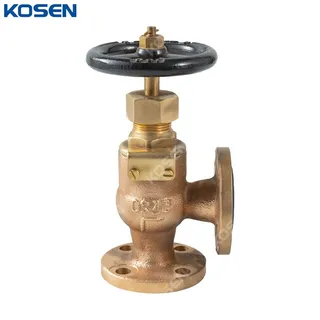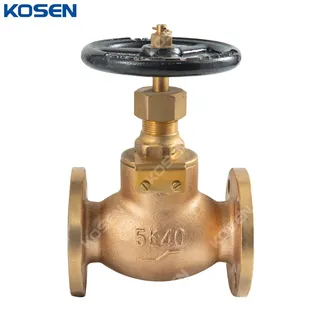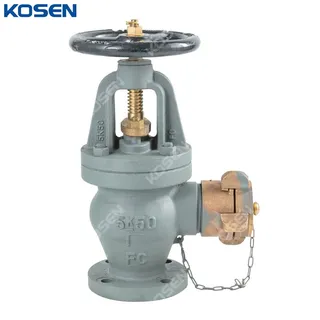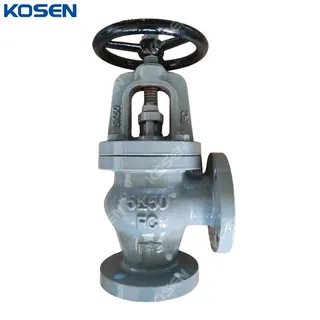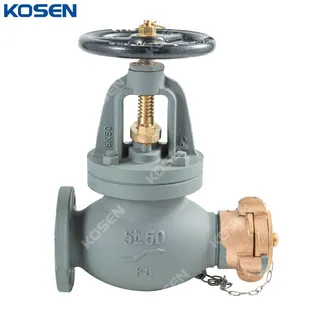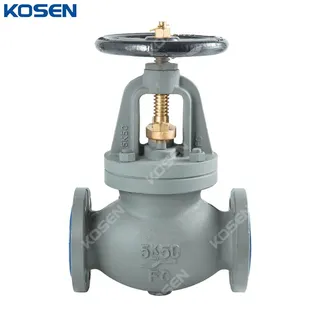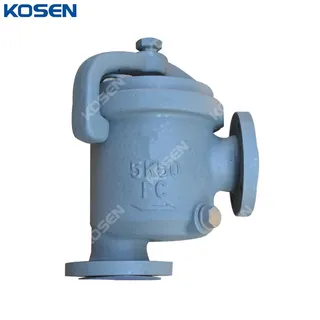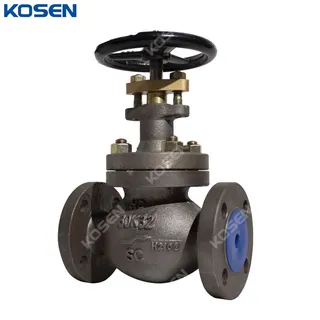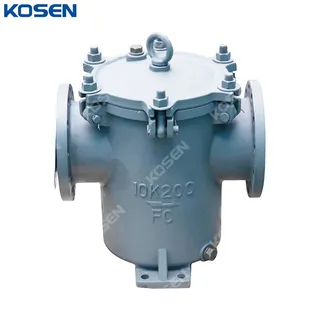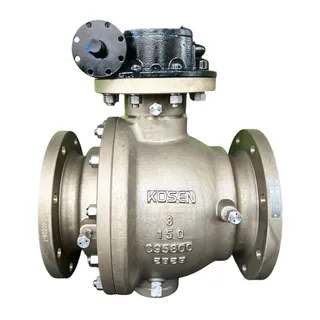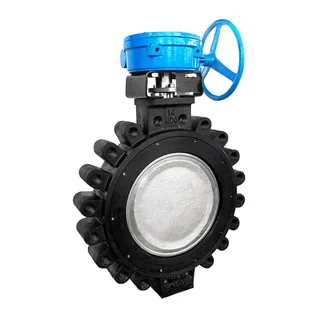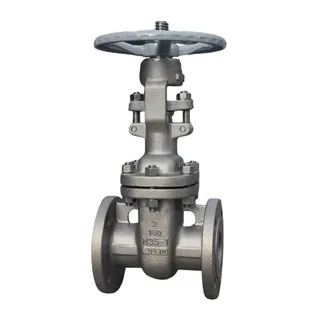In the harsh marine environment, seawater's high corrosive nature necessitates careful selection of valves. Marine valves must not only meet basic requirements such as corrosion resistance, anti-erosion properties, and sealing performance, but also ensure stability and long-term reliability under high pressure, large flow rates, and extreme conditions. Key factors for selecting marine valves include:
Marine valve bodies are typically made from corrosion-resistant metals such as bronze, stainless steel (particularly 316L stainless steel), and duplex steel. These materials offer excellent resistance to corrosion, mechanical strength, and durability against chloride ions, dissolved salts, and microorganisms in seawater. In some high-performance applications, high-alloy materials or special coatings may be used.
For sealing elements, materials like fluoroelastomer (FKM) and silicone rubber (VMQ) are chosen for their resistance to seawater corrosion, ensuring long-term sealing performance and preventing leakage caused by poor sealing.
Seawater flow velocity can cause erosion to valves over time. To ensure durability and long-term stability, marine valves need strong erosion resistance. This can be achieved by optimizing valve designs and incorporating wear-resistant materials, such as hard alloys or ceramic coatings. Erosion resistance is particularly important in large-flow systems.
The sealing integrity of marine valves is crucial for both system safety and economic efficiency. Seawater leakage not only wastes resources but may also lead to severe environmental pollution. In marine engineering, reliable sealing is vital to prevent leaks, maintain system pressure, and ensure safety. Valves should feature efficient, reliable sealing structures and materials, providing stable sealing under various working conditions.
Seawater environments impose high demands on valve materials. With the presence of chloride ions, dissolved salts, and microorganisms, materials need to be highly resistant to corrosion. Additionally, mechanical properties, strength, and antibacterial properties must also be considered when choosing materials. Common materials for marine valves include stainless steel, copper alloys, plastics, and certain composite materials.
Stainless steel, particularly 316L stainless steel, is the most common material used in marine valves. 316L stainless steel contains higher molybdenum levels, offering excellent resistance to seawater corrosion. It also has high mechanical strength and resistance to high temperatures, making it ideal for use in marine environments and seawater treatment equipment.
Copper alloys, such as copper-nickel and aluminum bronze, are widely used in marine valves. These materials offer excellent corrosion resistance and possess strong antibacterial properties, preventing the attachment of bacteria and marine microorganisms. Copper-nickel alloys are especially suitable for seawater desalination plants, ships, and offshore platforms due to their exceptional corrosion resistance.
Plastic valves, made from materials like polypropylene (PP) and polyvinyl chloride (PVC), are lightweight, corrosion-resistant, and cost-effective. These are often used in low-pressure, small-diameter seawater valves, particularly in seawater desalination and small-scale ship systems. However, plastic materials have lower mechanical strength and temperature resistance, limiting their use in high-pressure or high-temperature seawater applications.
Marine valves play a critical role in various marine engineering applications, including ships, offshore oil platforms, offshore wind farms, and seawater desalination systems. Depending on the operating environment, marine valves must meet stringent operational requirements.
Marine valves are extensively used on ships. In the cooling system, seawater valves control the flow of seawater into coolers to maintain engine and generator temperatures. In fire suppression systems, they regulate seawater flow to provide water for firefighting. Seawater valves in ships typically need to have quick opening and closing capabilities and highly reliable sealing performance.
Marine valves are indispensable in offshore oil platforms and offshore wind farms. On offshore platforms, seawater valves control the injection of seawater into oil wells, maintaining pressure and production capacity. In offshore wind farms, they regulate seawater flow for cooling power generation equipment, such as gearboxes and generators, ensuring optimal performance.
As freshwater resources become increasingly scarce, seawater desalination has become a critical solution to address water shortages. Marine valves are essential in seawater desalination systems, particularly in seawater pre-treatment, reverse osmosis, and desalting processes. These valves control seawater flow and pressure, ensuring smooth operation throughout the desalination process. By regulating high-pressure pumps in reverse osmosis systems, seawater valves help maintain membrane pressure and optimize water quality and desalination efficiency.
Maintenance and Management of Marine Valves
To ensure the long-term efficiency and reliability of marine valves, regular inspection and maintenance are crucial. Key maintenance tasks include:
Visually inspecting the valve for leaks, corrosion, or wear and ensuring the valve's operating mechanism is flexible and the valve markings are clear. Key components should be checked regularly to detect any issues early, preventing further deterioration.
2. Routine Maintenance
Routine maintenance includes checking and replacing valve seals, lubricating the operating mechanism, and cleaning valve surfaces to remove dirt and debris, ensuring the valve operates smoothly. In marine environments, where valves are subject to salt mist and seawater corrosion, regular maintenance can significantly extend the valve's service life.
When a valve malfunctions, it is important to diagnose and repair the issue promptly. This includes replacing damaged parts, repairing the sealing surfaces, adjusting the operating mechanism, and testing valve performance after repairs to ensure functionality is restored.
By maintaining marine valves, systems can be kept running smoothly, and equipment can continue to function at optimal levels in demanding marine environments.
